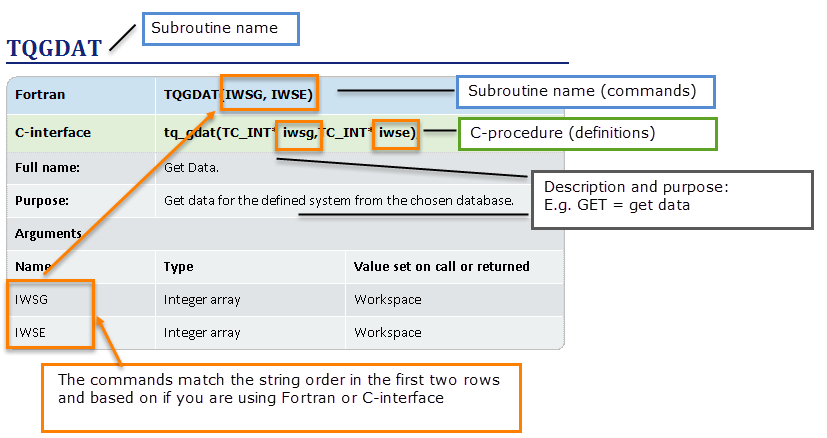ST2ERR
| Fortran |
ST2ERR(IERR, SUBR, MESS) |
|
|---|---|---|
| C-interface |
tq_st2err(TC_INT ierr,TC_STRING subr,TC_STRING mess); |
|
|
Full name: |
Set Error Code. |
|
|
Purpose: |
Called when an error occurs that cannot be handled by the current program unit. The program unit should return to the calling program. |
|
|
Comments: |
Identical to ST1ERR except that it is silent, i.e., no error message is printed. This should be the normal subroutine to call when detecting errors that should be handled by a higher level of the program. |
|
|
Arguments |
||
|
Name |
Type |
Value set on call or returned |
|
IERR |
Integer |
Set to an error code. |
|
SUBR |
Character*6 |
Set to the current subroutine name. |
|
MESS |
Character*72 |
Set to the error message to be printed |
Note the following conventions to distinguish between the programming languages.
- Routines starting with TQXXX, for example, TQGDAT, are in the Fortran interface
- Routines starting with tq_xxxx, for example tq_gdat, are in the C-interface.
- In Fortran, all routines are subroutines and do not return any values except where explicitly declared as functions.
- All the C procedures are declared as void and do not return any values except where explicitly otherwise declared.
An example of how to read the subroutine definitions.
